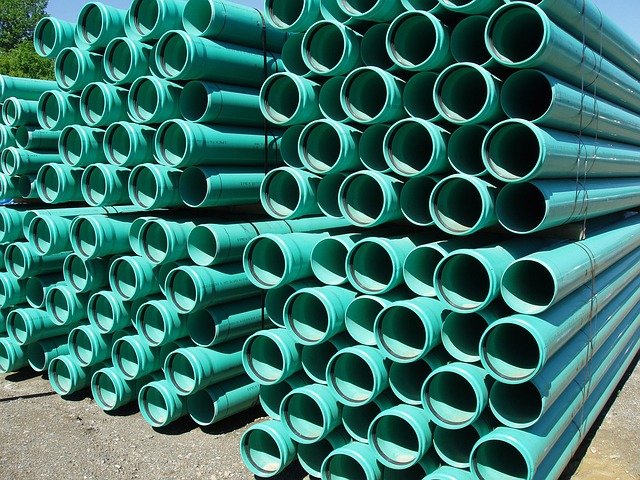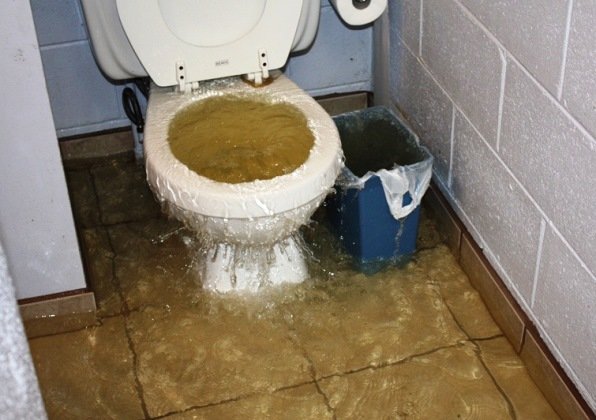A Brief Lesson on Sewer Design
AKA: Things To Know If You Poop at the Top of a Hill
I wrote a post last week about how to size a pump to move fluid out of a low-point in a system. With that in mind, we need to have a grasp of the hydraulics at play to design adequate sewer systems to get flows to the lows points to begin with. Typically, in relatively urban / developed areas, houses / other structures will have sanitary service connection\s to the underground sewer system that convey these flows.

In order to develop a design that is successful, we need to consider a few aspects:
- What is the average sewage generated per person, per day. Typically, where I'm located, we design sewers to account for approximately 360L/cap/day -- This might seem like a lot. That's because it probably is. We use a huge amount of water over this way, because we have it. As an example of strict water regulations, check out what's going on in South Africa -- They're allowed to use about 1/5th the amount.
- The approximate number of people contributing into the system, and generally, how they're distributed. This can either be from direct census count information, or extrapolated from dwelling density and occupancy design information for new development construction;
- There are a few other things to consider, but they vary pretty considerably from region to region, such as:
- How full are you comfortable letting your pipes get? 50%? 70%? 80? What happens if you have a sudden spike in contribution (think morning shower time, or SuperBowl Half-Time);
- What is your groundwater table like? Do we anticipate a lot of ground-water infiltration to happen? Is this a newly built PVC system, or an old, leaky, vitrified clay pipe system from the 50's? We might have to account for infiltration that is substantially higher than the actual waste-water flows we're anticipating;
- What part of the world are we in? This greatly affects how deep we need to design our sewer, if we need to avoid potential freeze-up issues. Places like Fort St John, BC, Canada have sewers close to 3m deep. Places like Victoria BC, Canada only need them to be 1m deep.
Keeping things super basic for now, lets make a few assumptions:
- We want to service a community of about 1500 people, each generating ~360L/cap/day of waste-water;
- Lets assume they're more or less evenly distributed along a 900m long sewer system;
- 500person community is contributing at the start of the run (Station 0+000);
- 500person community is contributing at the first inner-node (Station 0+300);
- 500person community is contributing at the second inner-node (Station 0+600);
- everything ultimately collects at our low point at the end of the system, where we would start thinking about pumping again (Station 0+900)
Time for some Basic Math! Bust out Excel, or your favorite spreadsheet tool!
We're going to primarily use what we in the biz call the "Hazen-Williams Equation". We mostly call it that, because that's what it's called.

We mentioned "R" in the last post. The Hydraulic radius is the wetted perimeter of the pipe divided by the cross-sectional flow area. It was easy to calculate for a full-pipe, but for a pipe that is partially full, this gets a bit tricker. And since I don't really like doing math and reinventing the wheel, we're going to use a bit of a 'workaround'.

The image above is generally showing that, at different depths of flow in a pipe (d/D, where 'd' is the depth of flow, and 'D' is the diameter of the pipe), we can see that our velocity (v/V where 'v' is the velocity at depth 'd', and V is the velocity when the pipe is 100% full at d=D) and flow-rates (same idea for q/Q) will increase along a specific curve. Interesting to note is that the highest flow you can get through a pipe is actually when it's only 80% full. Perhaps some kind of prize will be awarded to the astute reader that can explain why this might be the case.
SO! Generally, what we're going to do is:
- From our population estimates, we have a good idea of what our required flow rate (little 'q') will be.:
- 500ppl x 360L/ppl/day = 180,000L/day = 2.08L/s = 0.002m3/s
If we crunch the numbers to figure out what flow can come through that full 200mm diameter pipe, if it's 300m long and laid at a 1% grade, we get:

- Our full-pipe flow rate is approximately 32.8L/s;
- Our q/Q ratio is ~6% (2.1L/s / 32.8L/s);
- This corresponds to a d/D (flow depth) of 17% (34mm);
- We can then take this number and do some more calcs to figure our our flow velocity. We just need to do some basic trig to get the cross-sectional area of the pipe, and then we get our velocity! Approximately 0.6m/s! But is this the whole story??
Spoiler alert. No. It's not.
Earlier, we mentioned AVERAGE flow rates, and people pooping during the superbowl.... Lets think about that for a minute. If we're designing our system off of average values, then we need some kind of peaking factor to apply. Standard practice for BC in Canada has a peaking factor formula of:

Generally, you take your population (P) in thousands of people, and do a bit of math to figure out your PF. What this does, is get lower and lower the more people you add, which might seem counter intuitive. One the fact, one would think that your peaks will be higher with more people added to the system. But actually, the FEWER people you have, the more likely you are to have everyone using the system at the same time (morning showers, or half-time urination stations).
So what is our system looking like after accounting for peaking factors?...

Our modest little sewer system has gone from flowing 17% full in the first segment, to over 30% full. Our highest peaked flow rate is reaching close to 20L/s! That's way bigger than expected. But hey, it's better than flooding things out...

As with all things engineeringy, there are other things to consider...
- We show our pipes at a 1% grade, but is that achievable without going really really deep? 1% grade over 300m is a drop of 3m -- and it gets expensive to do that. Hopefully we're in a pretty hilly area. Designing sewers in British Columbia is easier than designing them in the prairies of Canada...
- We don't account for any groundwater or rain-water infiltration in our system -- this would need to be adjusted;
- Typical materials for sewer pipe (PVC, HDPE) have a serviceable lifespan in the range of 70~90years. Communities try to develop plans that forecast 5 to 20 years in the future. What kind of upstream developments might be happening that are going to affect our sewer? Do we need to upsize for that scenario?
- If we upsize, what happens in our 'today' scenario? Is our waste-water moving so slowly that we start to encounter odour problems, or problems with solids (read: poop and stuff) not being able to carried through the sewer by the slow moving water?
That's enough for now... Go design yourself a sewer!
Merry Christmas, enjoy the vote!
Downvoting a post can decrease pending rewards and make it less visible. Common reasons:
Submit
Congratulations @mstafford! You have completed the following achievement on the Steem blockchain and have been rewarded with new badge(s) :
Click here to view your Board of Honor
If you no longer want to receive notifications, reply to this comment with the word
STOPTo support your work, I also upvoted your post!
Downvoting a post can decrease pending rewards and make it less visible. Common reasons:
Submit